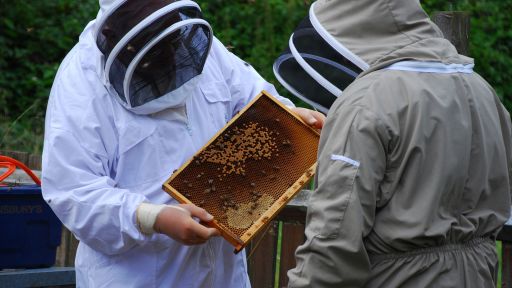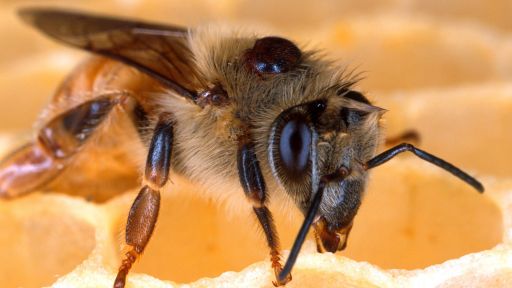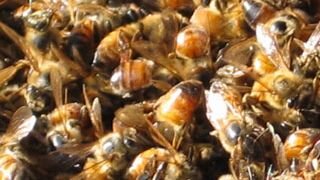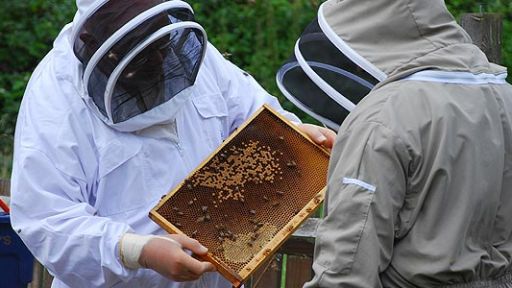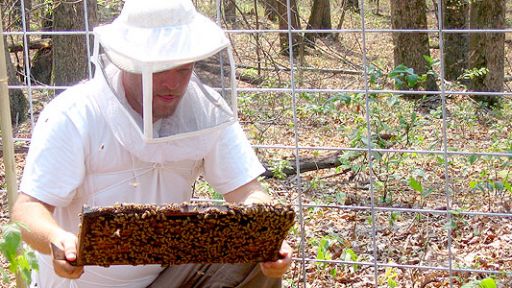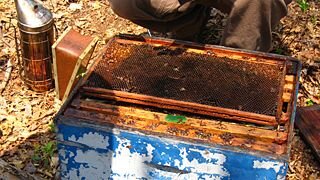The New York Times RETROREPORT, a video series that “looks back at the major stories that shaped the world”, recently covered colony collapse disorder (CCD)–a mysterious epidemic that appeared in 2006 and has been blamed for a third of honey bee colony losses in successive winters (CCD was the subject of the 2007 NATURE episode The Silence of the Bees.). CCD-affected hives are characterized by “very low or no adult honey bees present in the hive but with a live queen and no dead honey bee bodies present”. In short, worker bees abandon their hives.
Scientists have yet to identify a single cause of CCD, although many different agents have been proposed. These include pesticide residues, habitat loss, pathogens, parasitic mites, diseases, pollution, viruses, cell phones and even sunspots. Complicating the situation, winter losses have fluctuated in recent years–the winters of 2011/12 and 2013/14 saw around 22 and 23 percent colony loss respectively, down from 36 percent at the height of the epidemic. However, during the winter of 2012/13 the number crept up above 30 percent. According to the USDA, it is still unclear whether decreases in colony loss correspond to decreases in CCD or are the result of other factors, such as warm weather or changes in bee keeping practices.
References:
http://www.ars.usda.gov/News/docs.htm?docid=15572#losses


